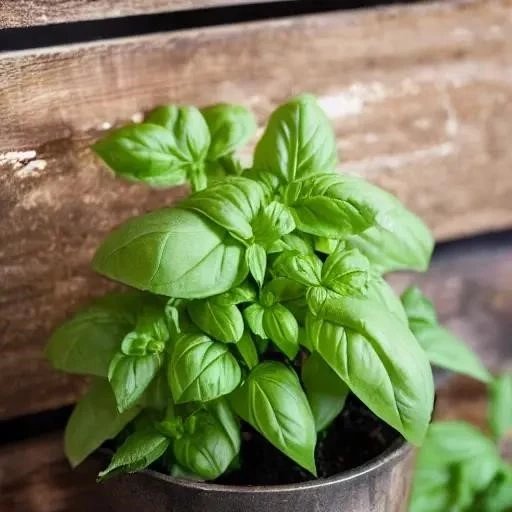Imagine a sun-drenched afternoon, the gentle breeze carrying the intoxicating aroma of fresh basil from your very own garden. This isn’t just a daydream; it’s an achievable reality that can dramatically elevate your home cooking and infuse everyday meals with unparalleled vibrancy. Sweet basil, the undisputed king of herbs, offers a sensory experience unlike any other—its peppery, slightly sweet, and aromatic leaves are the soul of Italian cuisine, a vibrant addition to Asian dishes, and an incredibly versatile ingredient for countless culinary adventures. Many aspiring green thumbs, however, find themselves daunted by the prospect of cultivating this delicate yet surprisingly resilient plant. Fear not, for mastering the art of growing magnificent basil is remarkably simpler than you might perceive, promising a bountiful harvest that will continuously inspire your kitchen endeavors.
From pesto to caprese salads, the demand for fresh basil is constant, often prompting trips to the grocery store for limp, exorbitantly priced sprigs. The true magic, however, lies in plucking vibrant, fragrant leaves directly from your garden or windowsill. While some might believe that a flourishing basil plant is the exclusive domain of seasoned gardeners, the truth is that with a few strategic insights and consistent care, anyone can cultivate an abundant supply. We are diving deep into the essential sweet basil gardening tips, revealing the secrets to nurturing robust, verdant plants that will generously reward your efforts with an endless supply of aromatic goodness, turning your gardening aspirations into a delicious reality.
Key Sweet Basil Growing Conditions
| Category | Requirement/Guideline |
|---|---|
| Sunlight | Minimum 6 to 8 hours of full sun daily for maximum growth. Can tolerate partial sun, but yield may be reduced. Protect from scorching midday sun in extremely hot climates. |
| Soil | Well-drained, moderately fertile, and rich soil is ideal. Ensure good aeration to prevent root rot. |
| Watering | Regular watering is essential. Keep soil consistently moist but never waterlogged; Avoid letting the plant dry out to the point of desiccation. |
| Temperature | Thrives in warm conditions. Plant seeds outdoors when temperatures consistently stay above 50°F (10°C). For starting seeds indoors, maintain a temperature of at least 70°F (20°C). Outdoor planting minimum 59°F (15°C). |
| Planting Time | After the last frost date, typically in late spring or early summer. In cooler climates, May is often the best time. Seeds can be started indoors 4-6 weeks prior to outdoor planting. |
| Spacing | Space transplants about six inches apart to allow for proper air circulation and growth. |
| Protection | Protect young seedlings from slugs and snails, which can quickly decimate tender new growth. |
| Reference |
The Golden Rule of Sunlight: A Basil’s Best Friend
Just like a sunbather on a tropical beach, sweet basil absolutely adores warmth and ample sunlight. For truly spectacular growth and the most potent flavor, your basil plants demand a minimum of six to eight hours of direct sun exposure daily. Strategically positioning your basil in a south-facing garden plot or a particularly bright windowsill is paramount for cultivating robust, healthy foliage. While basil can certainly survive in partial sun, you’ll find its growth less vigorous and its leaves smaller, diminishing the glorious harvest you’re undoubtedly envisioning. In regions experiencing intensely scorching midday sun, providing a touch of light afternoon shade can prevent leaf scorch, ensuring your plants remain lush and vibrant throughout the summer; By understanding this fundamental solar requirement, you’re already laying the groundwork for a remarkably successful basil season.
Nurturing the Roots: Soil and Sustenance
Beyond the crucial aspect of sunlight, the foundation for a thriving basil plant lies beneath the surface—in its soil. Basil flourishes in well-drained, moderately fertile, and rich soil. Think of it as providing a gourmet meal for your plant: a soil mix that is too heavy or waterlogged will suffocate the roots, leading to a quick demise. Conversely, overly sandy soil might not retain enough moisture or nutrients. Incorporating organic matter, such as compost, will significantly improve soil structure, enhancing both drainage and fertility, creating an incredibly hospitable environment for your basil’s root system. When it comes to watering, consistency is key. Basil needs regular moisture; neglecting it to the point of desiccation will cause wilting and stress, but drowning it will promote root rot. A good rule of thumb is to water when the top inch of soil feels dry to the touch, ensuring thorough saturation without leaving the plant sitting in standing water.
Timing is Everything: Planting for Peak Performance
Patience, as the old adage goes, is a virtue, particularly when planting basil. This heat-loving herb absolutely despises cold temperatures. Industry experts universally recommend waiting until all danger of frost has passed and night temperatures consistently remain above 50°F (10°C) before transplanting basil outdoors. For those eager to get a head start, initiating seeds indoors four to six weeks prior to the last expected frost date can be incredibly effective. Provide them with a warm environment, ideally around 70°F (20°C), and consistent moisture. Once the weather warms sufficiently, you can transplant your vigorous seedlings or nursery-grown plants, spacing them approximately six inches apart to allow for ample air circulation and future growth. In cooler climates, May often emerges as the prime month for planting, harnessing the burgeoning warmth of late spring to propel rapid growth.
Beyond the Basics: Advanced Tips for a Bountiful Harvest
Cultivating basil isn’t just about planting; it’s about intelligent maintenance. To encourage a bushier plant and prevent it from bolting (going to seed prematurely), routinely pinch off the top sets of leaves once the plant has developed a few true leaf pairs. This simple act redirects the plant’s energy into producing more side shoots, resulting in a fuller, more productive herb. Companion planting also offers synergistic benefits; basil thrives when situated near tomatoes, enhancing their flavor and potentially deterring pests. Even if outdoor space is limited, growing basil indoors on a sunny windowsill is entirely possible, though it may not yield as profusely as its outdoor counterparts. By integrating these expert-level sweet basil gardening tips, you are not merely growing a plant; you are cultivating a sustainable source of culinary joy, ensuring that fresh, aromatic basil is always just a snip away, ready to elevate every dish you create.
The journey of growing your own sweet basil is an incredibly rewarding endeavor, transforming a simple ingredient into a source of immense satisfaction. From the careful selection of a sunny spot to the mindful act of watering, each step contributes to the vibrant health of your plant and, ultimately, to the richness of your meals. Embracing these practical, forward-looking sweet basil gardening tips empowers you to transcend the ordinary, fostering a deeper connection with your food and the natural world. So, embark on this aromatic adventure, confidently cultivating your own green gold, and prepare to savor the unparalleled freshness and flavor that only homegrown basil can provide. Your kitchen, your palate, and your spirit will undoubtedly thank you.






